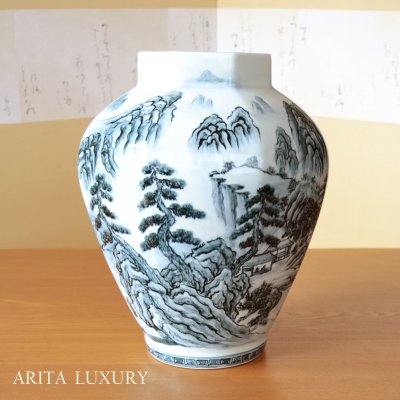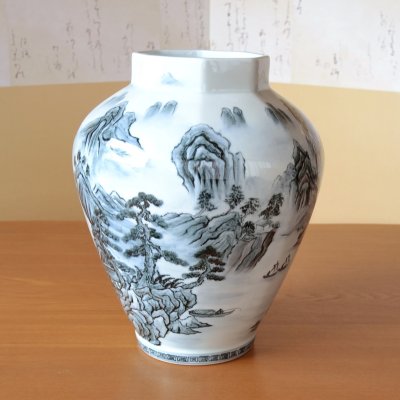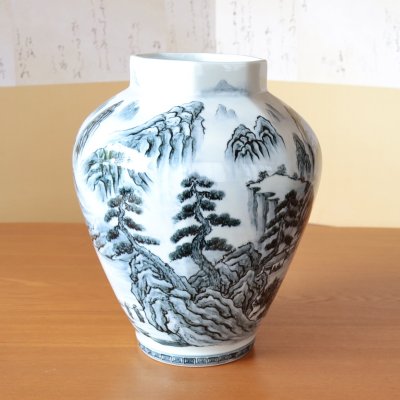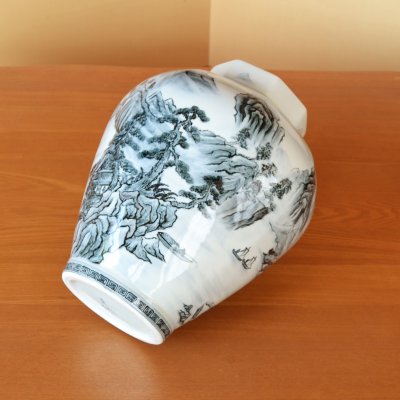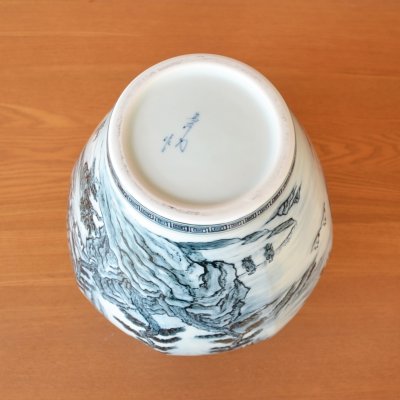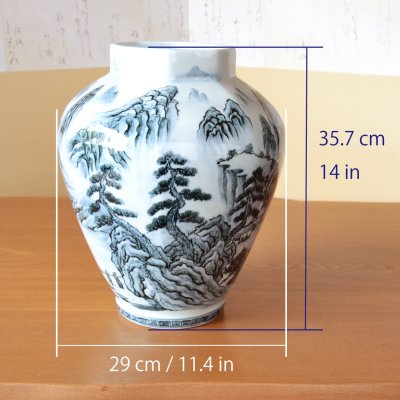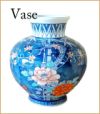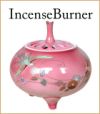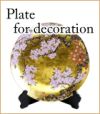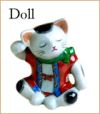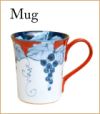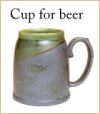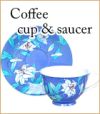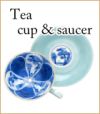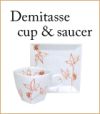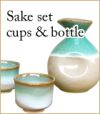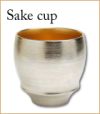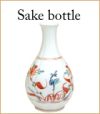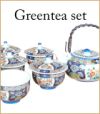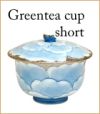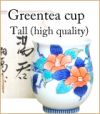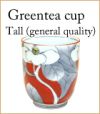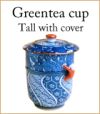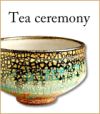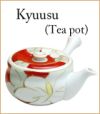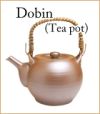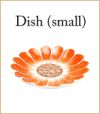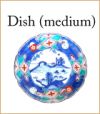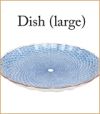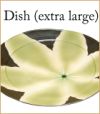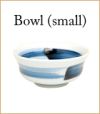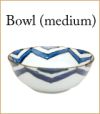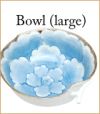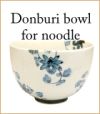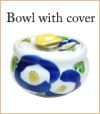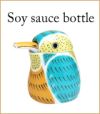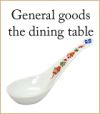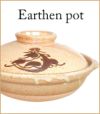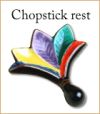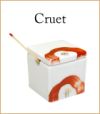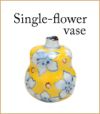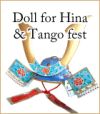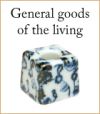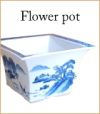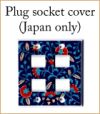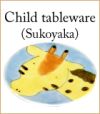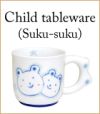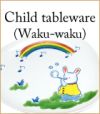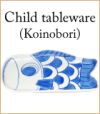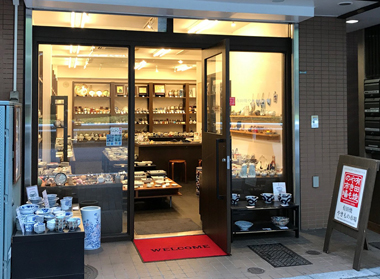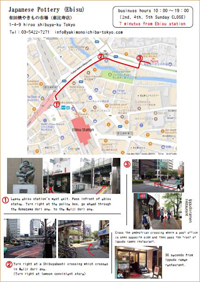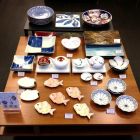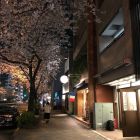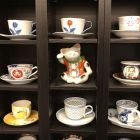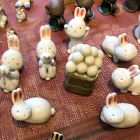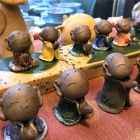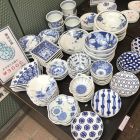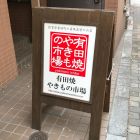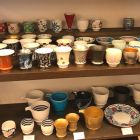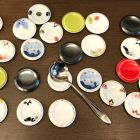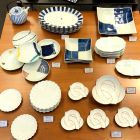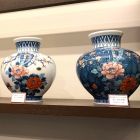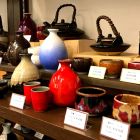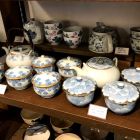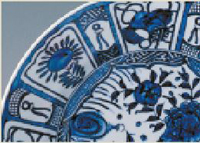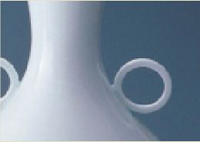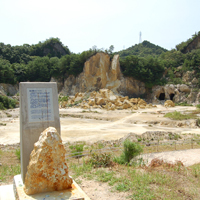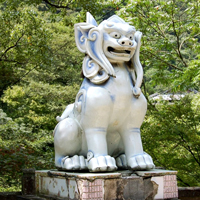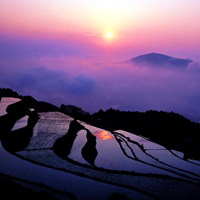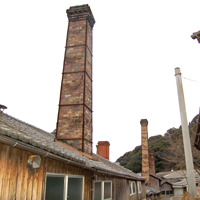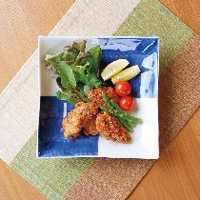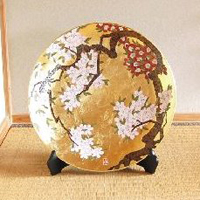Large Vase Kodai Sometsuke Sansui Landscape | The first-generation head of the Shinemon Kiln [146195]
Large Vase Kodai Sometsuke Sansui Landscape | The first-generation head of the Shinemon Kiln
[146195]
Price: 440,000JPY
Weight: 9000g
Low stock
[size]
Width: 29cm / Height: 35.7cm
Width: 11.4in / Height: 14in
-----------------------
This is a masterpiece by the late Shinichiro Baba, the first-generation founder of the Shinemon Kiln, one of the most renowned kilns representing Arita ware. Standing over 35 cm tall, this imposing work features a bold landscape painting (sansui) executed in traditional blue-and-white (sometsuke) decoration on a large vase as its canvas.
Today, the Shinemon Kiln is widely recognized as a leading studio in the art of “Yohen,” a technique of skillfully manipulating glazes to achieve striking effects. However, this work was not created in the Yohen style, but rather in sometsuke. This is because it was made by Shinichiro Baba himself during his career, at the time he founded the kiln. Through sometsuke, one of the most fundamental painting techniques in Arita ware, he expressed his artistic mastery. Since sometsuke works are rarely produced by the current Shinemon Kiln, this piece has now become an extremely rare example.
The vase itself has an octagonal form, softly faceted into eight sides. The gentle edges catch the light, creating shadows that add both quiet tension and refinement to the shape. This softened octagonal design combines sharpness with grace, imparting a modern impression to the surrounding space.
The painted subject, sansui (landscape), depicts natural scenery such as mountains, rivers, lakes, trees, and rocks, with little emphasis on the human presence. When humans or buildings are shown, they appear small, highlighting the grandeur of nature. Landscape painting has long been influenced by Daoism, Confucianism, and Zen Buddhism, all of which respect nature and seek harmony with it. Thus, sansui expresses philosophical and spiritual pursuits through depictions of nature. Beyond ceramics, this theme is also a central subject in traditional ink paintings on hanging scrolls, representing one of the most classical motifs in East Asian art.
From the perspective of technique, this vase showcases the sometsuke method, in which designs are painted onto the unglazed clay body before glazing. The flowing brushstrokes and delicate touches of this technique are perfectly suited to rendering the subtle world of landscape painting. Since the absorbent surface of the bisque-fired body does not allow for corrections, each brushstroke must be executed with precision in a single attempt. This piece embodies patience, concentration, and compositional skill, resulting in a truly accomplished work.
[Potter Profile]
Shinichiro Baba (deceased)
The first-generation head of the Shinemon Kiln
Member of Nitten / Full Member of the Japan Contemporary Arts and Crafts Association / Member of the Saga Prefecture Ceramic Association / Member of the Arita Ceramic Association
[Shinichiro Baba's career is as follows ]
Born in 1924 in Arita, Saga Prefecture
1972: Founded the Shinemon Kiln in Arita.
1979: Selected for the Prefecture Exhibition with "Hexagonal Celadon Bowl."
1981: Selected for the Nitten exhibition with "Oil Spot Tenmoku Large Bowl," subsequently selected 21 times.
1989: Appointed as an art exhibition judge.
2000: Exhibited "Saiun-99" and "Sai-99" at the British Museum in London (Saga Prefecture Ceramic Exhibition).
2004: Exhibited "Saikei" and "Saimon" at the Arita Pottery Exhibition in Germany.
[Main Awards]
1983: Won the First Place Bijutsu Kyokai Prize at the Bijutsu Kyokai Exhibition for "Cinnabar Flower Vase."
1986: Received the Grand Prize and the Contemporary Craft President's Prize at the Contemporary Crafts Kyushu Exhibition.
1996: Awarded the Contemporary Craft Prize at the Contemporary Craft Exhibition for "Akebono no Nagisa."
2000: Received the Full Member Prize at the Contemporary Craft Exhibition for "Rensaku・Sai."
Width: 29cm / Height: 35.7cm
Width: 11.4in / Height: 14in
-----------------------
This is a masterpiece by the late Shinichiro Baba, the first-generation founder of the Shinemon Kiln, one of the most renowned kilns representing Arita ware. Standing over 35 cm tall, this imposing work features a bold landscape painting (sansui) executed in traditional blue-and-white (sometsuke) decoration on a large vase as its canvas.
Today, the Shinemon Kiln is widely recognized as a leading studio in the art of “Yohen,” a technique of skillfully manipulating glazes to achieve striking effects. However, this work was not created in the Yohen style, but rather in sometsuke. This is because it was made by Shinichiro Baba himself during his career, at the time he founded the kiln. Through sometsuke, one of the most fundamental painting techniques in Arita ware, he expressed his artistic mastery. Since sometsuke works are rarely produced by the current Shinemon Kiln, this piece has now become an extremely rare example.
The vase itself has an octagonal form, softly faceted into eight sides. The gentle edges catch the light, creating shadows that add both quiet tension and refinement to the shape. This softened octagonal design combines sharpness with grace, imparting a modern impression to the surrounding space.
The painted subject, sansui (landscape), depicts natural scenery such as mountains, rivers, lakes, trees, and rocks, with little emphasis on the human presence. When humans or buildings are shown, they appear small, highlighting the grandeur of nature. Landscape painting has long been influenced by Daoism, Confucianism, and Zen Buddhism, all of which respect nature and seek harmony with it. Thus, sansui expresses philosophical and spiritual pursuits through depictions of nature. Beyond ceramics, this theme is also a central subject in traditional ink paintings on hanging scrolls, representing one of the most classical motifs in East Asian art.
From the perspective of technique, this vase showcases the sometsuke method, in which designs are painted onto the unglazed clay body before glazing. The flowing brushstrokes and delicate touches of this technique are perfectly suited to rendering the subtle world of landscape painting. Since the absorbent surface of the bisque-fired body does not allow for corrections, each brushstroke must be executed with precision in a single attempt. This piece embodies patience, concentration, and compositional skill, resulting in a truly accomplished work.
[Potter Profile]
Shinichiro Baba (deceased)
The first-generation head of the Shinemon Kiln
Member of Nitten / Full Member of the Japan Contemporary Arts and Crafts Association / Member of the Saga Prefecture Ceramic Association / Member of the Arita Ceramic Association
[Shinichiro Baba's career is as follows ]
Born in 1924 in Arita, Saga Prefecture
1972: Founded the Shinemon Kiln in Arita.
1979: Selected for the Prefecture Exhibition with "Hexagonal Celadon Bowl."
1981: Selected for the Nitten exhibition with "Oil Spot Tenmoku Large Bowl," subsequently selected 21 times.
1989: Appointed as an art exhibition judge.
2000: Exhibited "Saiun-99" and "Sai-99" at the British Museum in London (Saga Prefecture Ceramic Exhibition).
2004: Exhibited "Saikei" and "Saimon" at the Arita Pottery Exhibition in Germany.
[Main Awards]
1983: Won the First Place Bijutsu Kyokai Prize at the Bijutsu Kyokai Exhibition for "Cinnabar Flower Vase."
1986: Received the Grand Prize and the Contemporary Craft President's Prize at the Contemporary Crafts Kyushu Exhibition.
1996: Awarded the Contemporary Craft Prize at the Contemporary Craft Exhibition for "Akebono no Nagisa."
2000: Received the Full Member Prize at the Contemporary Craft Exhibition for "Rensaku・Sai."
 |
Import duties, taxes, and charges are not included in the item price or shipping cost. When a duty occurs, you are responsible for paying Customs Duties. |
 |
 |
Source: www.exchange-rates.org
